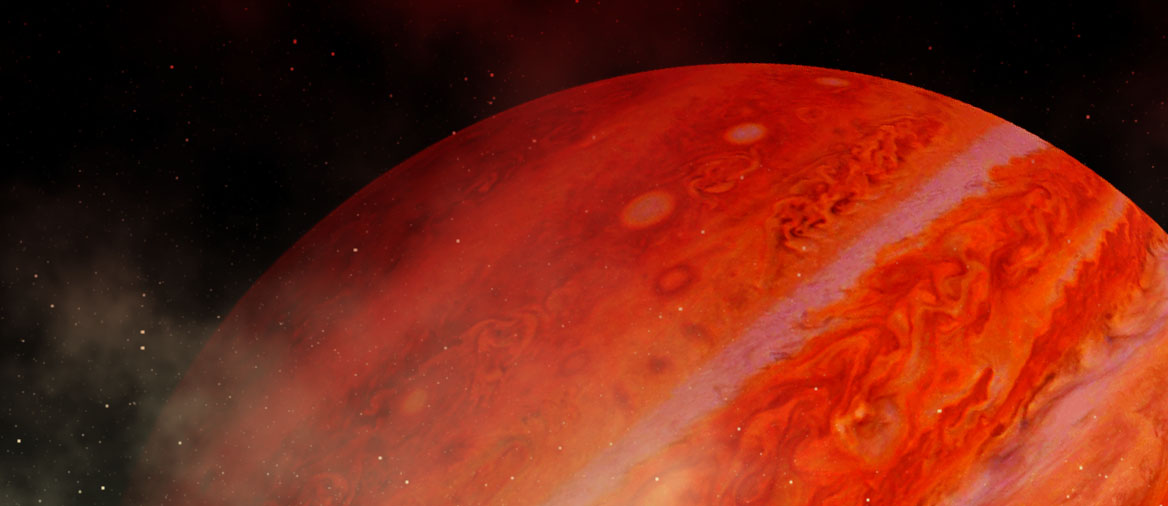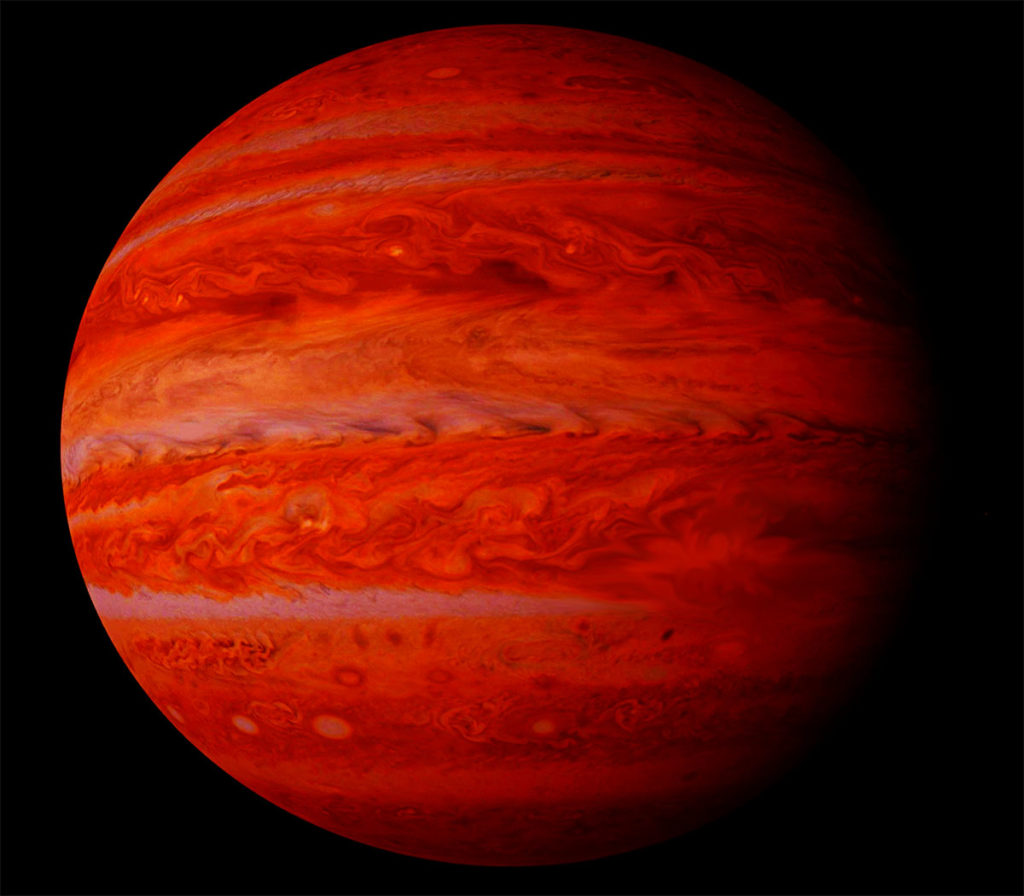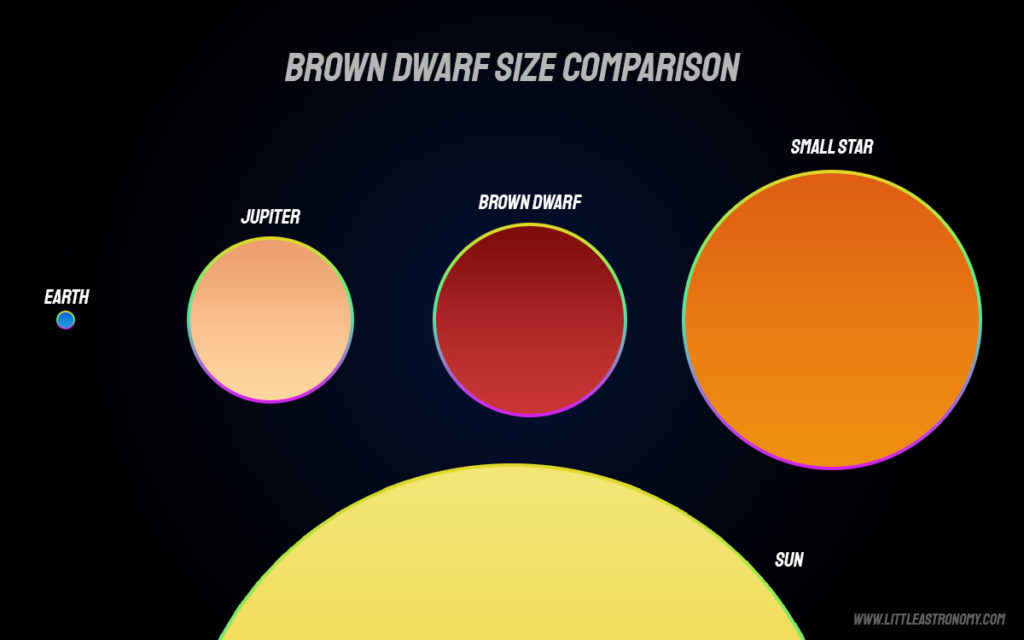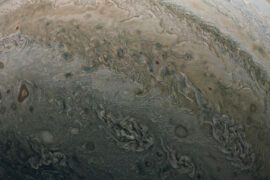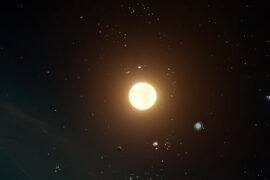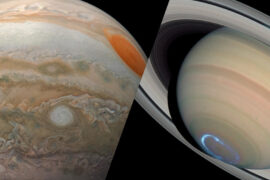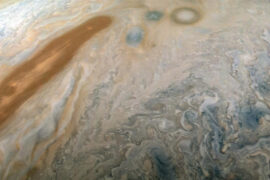You might have heard someone use the term failed star when referring to the planet Jupiter, or other celestial objects. It is a popular term that is thrown around in classrooms or by hobby astronomers, but what does it mean exactly? and is Jupiter really a failed star?
A failed star is a celestial body made of gas that can’t sustain nuclear fusion of hydrogen because it couldn’t reach the necessary mass for it during its formation like a successful star.
Astronomers also refer to these objects as brown dwarfs.
We are going to use both terms interchangeably below, but note that they refer to the same thing.
Because brown dwarfs did have a protostellar core (a fancy term to say they started as a big ball of hot gas), they do share some characteristics with realized stars. For example:
- They do achieve some nuclear reactions. For example, most of them are able to fuse deuterium, and some are even able to fuse lithium.
- They can produce some heat.
- They emit some light, but generally only in the infrared spectrum, which makes it hard to detect them.
- They have a mass between 13 times and 80 times the mass of Jupiter.
Differences between stars and failed stars
Now that we know what a failed star is, it can be helpful to understand why they can’t be classified as stars and what the exact key differences are between each classification.
- The main definition of a star is that it releases energy and light because of the thermonuclear reaction that turns hydrogen into helium in its core. Failed stars don’t have the necessary mass to achieve this reaction.
- Failed stars have less mass than stars and are usually also smaller. Some brown dwarfs can even be smaller than Jupiter.
- Stars generally have more than 80 times the mass of Jupiter because that is the point at which an object has enough mass to start hydrogen fusion. Failed stars have less than that.
- Stars have enough gravity to form solar systems with planets. Brown dwarfs generally do not. In fact, most of the brown dwarfs that have been found are orbiting around a star, with just a few lonely rogue ones that have been found traveling across the universe by themselves. There’s only one confirmed case found of a brown dwarf having enough gravity to capture a planet and have it orbit around it.
History of Brown Dwarfs
The history of Brown dwarfs is quite recent in astronomical terms. They only started to be theorized in the 1962 by Dr. Shiv S. Kumar in a paper called The Structure of Stars of Very Low Mass.
Dr. Kumar originally wanted to call them black dwarfs, but the term was already being used to refer to white dwarf stars that are at the endpoint of their life, so the astronomical community settled on brown dwarfs.
Because they only emit light in the infrared spectrum, these type of celestial objects is hard to find, so it wasn’t until 1988 when their existence was confirmed when an object called GD 165B was found orbiting a star. At first, it was believed the object was another star, but after further examination, it didn’t meet the necessary characteristics so it had to be classified as something else. Eventually, it was decided it met the requirements of a brown dwarf so it was catalogued as such.
Since then, more than 50 other brown dwarfs have been found orbiting stars, with many other candidates still being researched. That seems like a lot until you learn an estimate predicts there are at least 25 billion brown dwarfs just in our galaxy, the Milky Way.
Is Jupiter a failed star?
Jupiter is one of the planets in the Solar system that is made mostly out of gas. In fact, it’s made mostly out of hydrogen and helium, the same components stars are made of. Because of this, people believe that at some point during its creation it was on the path to becoming a star, but was never able to reach the necessary mass for it. So, does that mean it is a failed star?
No. Jupiter is not a failed star or a brown dwarf. Here’s why:
- Jupiter would need at least 13 times more mass to be a brown dwarf
- Jupiter does not emit its own light
- While it generates some heat due to the reactions in its core. It can’t achieve deuterium fusion
So, what is Jupiter then? Jupiter is the prototype we use to measure a type of planet that we call gas giants. These are planets that might have a solid core, but their composition is primarily hydrogen and helium. In fact, even though it might look solid in photos, if you were to fall in Jupiter’s atmosphere, there would be nothing to stop you and you would fall all the way to its core (assuming you could survive the heat and pressure).
The other gas giant we have in the Solar System is Saturn.
Neptune and Uranus are also made of gas, but because their composition is different, they have their own classification that we call ice giants.
How do Brown Dwarfs die?
Brown dwarfs don’t die the same way a star does. Because they were never able to reach the necessary characteristics to form a main-sequence star, it does not follow the same life cycle as them. In fact, it would be possible to say Brown dwarfs don’t die because they were already born dead.
Brown dwarfs are already cool when they are created, and because of this they don’t emit much heat or light, so will never reach the point where the conditions will be met so they can become a white dwarf or a black hole, or go supernova like a real star.
Now, if the question is, when will they be destroyed? well that is going to depend on the particular situation of each one, but they will most likely follow the same fate as any planet in their corresponding Solar system.
Summary
Here’s a quick rundown of what we learned about brown dwarfs/failed stars.
- Failed stars are the weird middle brother between a gas giant planet and a star.
- Failed stars are also referred to as brown dwarfs.
- Jupiter is not a failed star. Its mass is too small for it.
- Same for Saturn and Neptune.
- Failed stars can emit light and heat.
- Failed stars do not achieve thermonuclear fusion of hydrogen
- Failed stars can fuse deuterium

